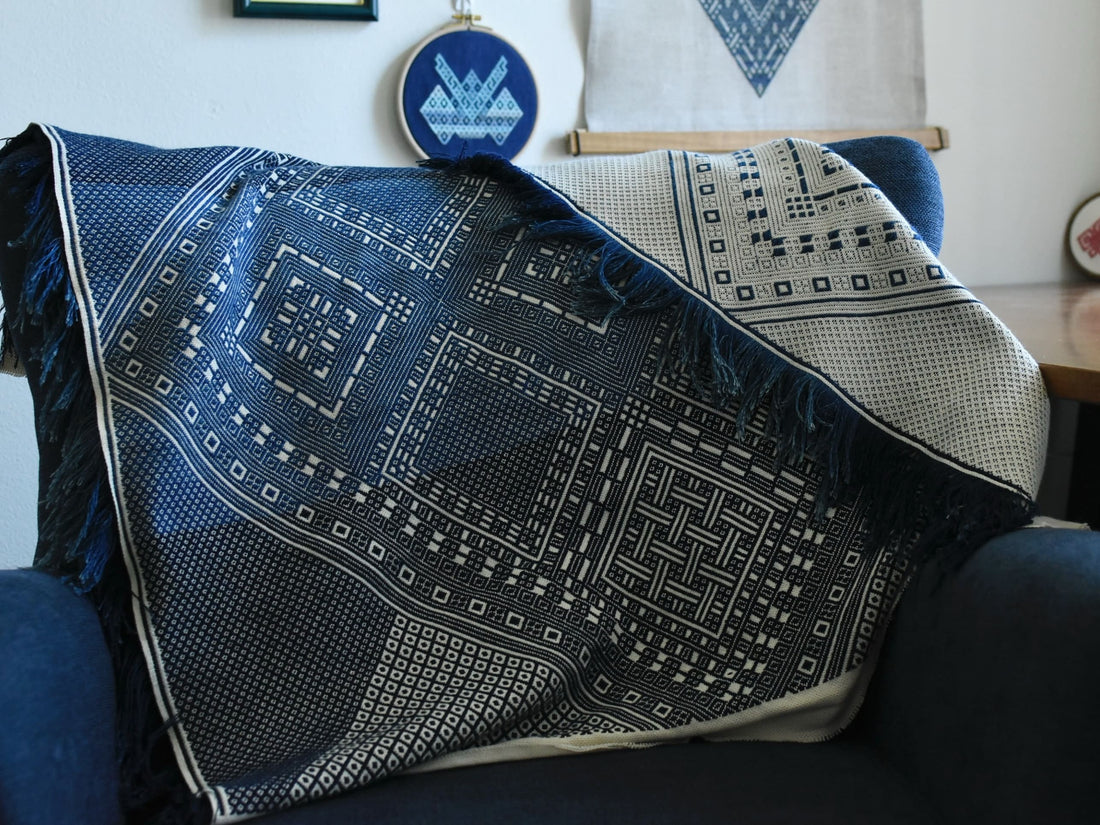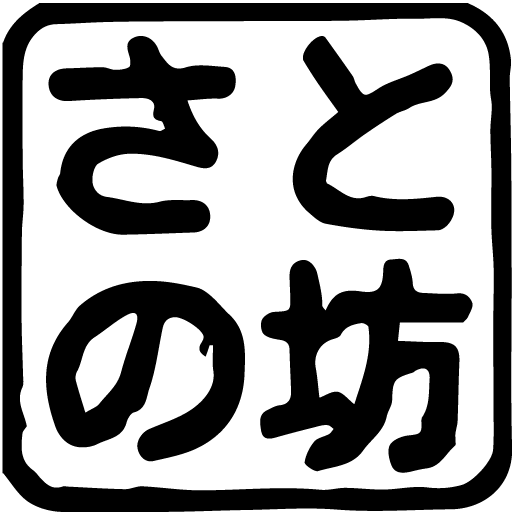
Accept mistakes
◆October Greetings
Hello everyone, we've finally entered October. There are only three months left of the year, and club activities have only been running for about two months. Autumn is deepening with each passing day in Bellevue, where I live, and it's now the time of year when acorns and fallen leaves stain the ground. It was a chilly 7 degrees this morning, and I had to decide more than necessary whether to wear a thick jacket or a simple fleece when taking my kids to and from school. Perhaps because I've been accompanying my eldest son, who started baseball this spring, to practice, my sunburn still shows signs of summer.
◆Making a Kogin Embroidery Throw In June, I practiced for the marathon, devoted myself to making a kit in July, and thoroughly enjoyed a trip to Japan in August, so in September I focused on making a Kogin lap blanket for the first time in a while. At the beginning of October, I was excited, thinking that the thread would finally run out the next day, when I discovered that the apex near the end of the stitch was off by one row on the top and bottom halves of the fabric. Feeling unsettled, I checked the location of the mistake and found it was a position I must have embroidered more than six months ago, 140 rows back from my current position. While this piece does not have a design, it is based on a consistent rhythm, so there was a point where that rhythm was disrupted. Moreover, the disruption in rhythm occurred in different rows on the top (or bottom) half (the second was 100 rows back). Because I was completely wrong on each row, by the time I noticed the mistake, the top half was back in order. Taking breaks and constantly being in various mental states, I hadn't noticed it.
◆What do you do if you make a mistake ? What do you do if you make a mistake? I conducted a survey on social media, and over half of the respondents said they would correct it. Although less than half said they wouldn't correct it, there were still a fair number who nodded in agreement, saying this is what makes Kogin embroidery so interesting. In my case, I generally correct it. The reason is that I have always thought that regular, organized stitches are more beautiful, and unfortunately, I had never realized the beauty that mistakes can have. In cases like my piece this time, a stitching mistake makes the "mistake" more pronounced, but I think there are also cases where a disruption in rhythm can act as a wake-up call or become a happy accident that develops into a new pattern. I will explore this in more depth next time.
◆ Accept mistakes as part of the process of the work
This piece was originally a prototype for a blanket I was commissioned to make by koginbank two years ago. At the time, I embroidered a dozen or so rows on this fabric to check the fabric, thread, and pattern size. I set that as my production goal for this club activity and worked on it. When I discovered the mistake this time, I was torn between 1) re-stitching or 2) not re-stitching. Re-stitching would be a pain, and there was a high possibility that even if I thought I had re-stitched, I would make a new mistake (a frightening experience that I've had many times). So it took courage to re-stitch. At the same time, it also took courage to accept the piece as finished, even though I knew the rhythm was clearly off in two places. Perhaps the courage I felt about not correcting it is due to having done so much kogin embroidery. I think I'd unconsciously built up a "correct answer" in my mind, even though there is no correct answer.
On the other hand, this mistake was a valuable experience in a way that I would not have had if I had embroidered a design. Also, it was fun to have the mischievous feeling of "secretly making a mistake." For that reason, I decided to continue with it as it was, as a way to remember the days of my creation.
◆Seeing beauty in mistakes Having had the experience of accepting stitching mistakes, I feel like my heart has become lighter as I face Kogin embroidery. For those who are already accepting mistakes while creating, this may seem like a small decision, but for me, who had previously unconsciously pulled out the threads like a robot, thinking "I'll fix it if I make a mistake," it was an experience that made my heart pound a little. Of course, I'm simply relieved that I no longer have to worry about making the same mistake again, as well as the sense of hassle I mentioned earlier. (There are times when I repeat mistakes as if I'm cursed.)
The fact that the pattern is not symmetrical (some patterns are not symmetrical in the first place, but there are certain rules) makes me feel relaxed. It may sound exaggerated, but it even gives me a generous feeling of "there will be some mistakes anyway, so I'll use it boldly." The point here is that I "unintentionally" deviated from the rules. This is an event that occurs in the small world of Kogin cloth, but as someone who makes a living from Kogin embroidery, it has become a way of thinking that I want to incorporate into my daily life. I feel like I have found some kind of beauty in these small mistakes, which relieves tension. When you think of it as a product of chance, doesn't it feel like you have been blessed with great luck? There is value in the fact that you cannot make mistakes no matter how hard you try.
Today's blog could also be read by those poor souls who are trying so hard to justify their mistakes (lol), but I want to convey here that there is beauty in correcting something and beauty in not correcting something, and that no matter which you choose, there is beauty in both humans and Kogin embroidery.
◆ Introducing Kogin Embroidery in Seattle I'd like to inform you again that I have been given the opportunity to introduce Kogin Embroidery at the Culture Day event to be held at the Japanese Cultural and Community Center of Washington in Seattle next month on November 2nd. This is one of the reasons why I visited Yumemiru Koginkan when I returned to Japan temporarily. This month, I would like to focus on thinking about Kogin Embroidery as well as embroidering. I look forward to your continued support in the remaining months of 2025.
▶️Materials Research Blog
▶️Shop (currently being adjusted)
▶︎Digital data sales of PDF kit designs and instructions
・Hinamatsuri 2022 minne sales page
・Gentle-faced goldfish Nebuta minne sales page
・Bold-faced Goldfish Nebuta minne sales page
▶︎Goldfish Nebuta Kit (Full Set) koginbank Online Shop
▶︎ NEW Partial Kit Tue Shop (A general store located in Komise, Kuroishi City, Aomori Prefecture)
▶️Instagram (We share the simplicity and fun of Kogin embroidery through videos, etc.)
Satonobou
